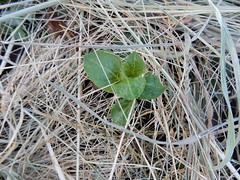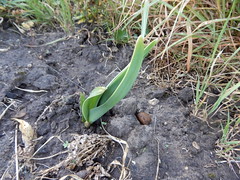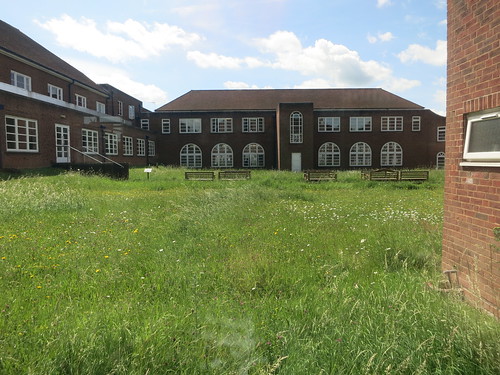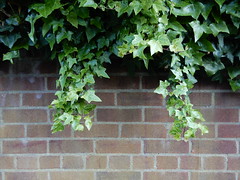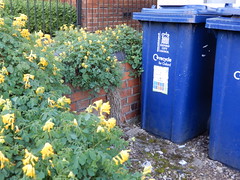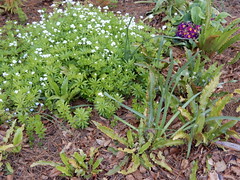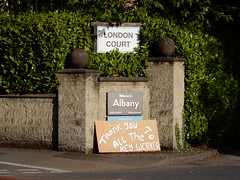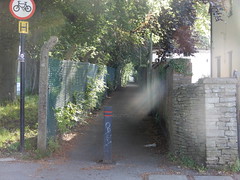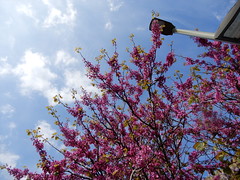In the dry of the May drought, certain weeds I like to tolerate (Herb Robert, Alkanet, Dandelion) for the sake of the bees, and the pleasant smell of sun-crisped childhood wastelands they evoke, are starting to destroy their more intriguing pot and bed mates. The dandelion that always seems to lodge in the same space as the Blue Himalayan Poppy no matter how many times or how thoroughly I weed it out, the Herb Robert that drives its hairy spider stem-star like a nail into the exact place a fuchsia or pansy had chosen to grow, the sucker ash and lonerica shootlets stabbing up into the heart of my Gardenia and Chrysanthemums.
And I was musing about the plants which preferentially grow in the holes where other plants are already growing, on a long hot walk to see a friend (socially distanced) about a rooted cutting and some seedlings (necessary) and I saw this:
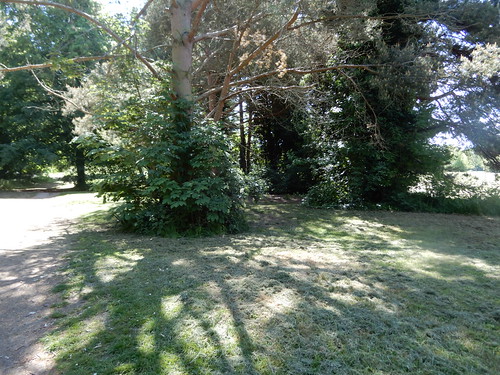
The same phenomenon, in grand scale; a Horse Chestnut growing out of the same hole as a more fragile, ornamental tree. Here's a closer view, and you can see an ivy and a an elder having a go, too.

But this is no decorative base-hugging thicket. In the heat of spring, it has become a struggle to the death. This looks innocent enough:

But it leads to this:
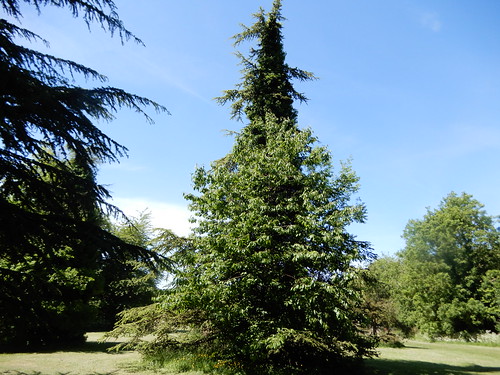
Going...

Going....
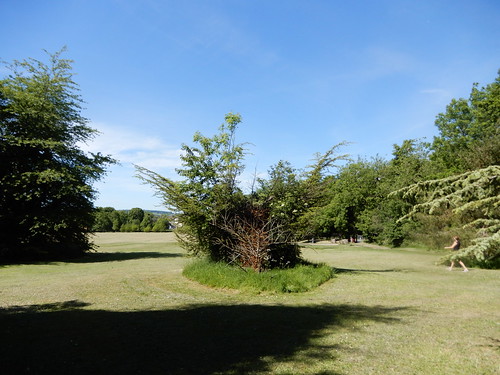
And gone.
And I was musing about the plants which preferentially grow in the holes where other plants are already growing, on a long hot walk to see a friend (socially distanced) about a rooted cutting and some seedlings (necessary) and I saw this:

The same phenomenon, in grand scale; a Horse Chestnut growing out of the same hole as a more fragile, ornamental tree. Here's a closer view, and you can see an ivy and a an elder having a go, too.

But this is no decorative base-hugging thicket. In the heat of spring, it has become a struggle to the death. This looks innocent enough:

But it leads to this:

Going...

Going....

And gone.











